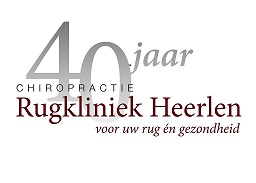
Current Management of Neck Pain Reviewed
Current Management of Neck Pain Reviewed
Neck pain is extremely common and disabling. In the UK Hill et al. report that as many as 31% of adults have had neck pain in the last month, and 48% of neck pain patients report persistent pain one year later (1).
Given those facts it is surprising that there is still very little research about the causes of neck pain, that its natural history is poorly understood, and that evidence of effectiveness for all treatments offered by health professionals is not yet strong (2/3).
The May 1995 report of the Quebec Task Force on Whiplash-Associated Disorders titled Redifining Whiplash and its Management acknowledged the lack of evidence, was critical of traditional treatment approaches, and prescribed this new approach to the management of patients with cervical spine soft-tissue injuries and neck pan:
Avoid rest, passive treatments, and use a soft collar support – these approaches prolong pain and disability, and lead to chronic or long-term problems.
Reassure patients and keep them as active as possible. Use treatments that promote and support activity – specifically manual treatments (joint manipulation and mobilization, soft-tissue techniques) and exercises in combination with time-limited use of milder medications (NSAIDs, analgesics).
Avoid unproven therapies including acupuncture, spray and stretch, transcutaneous electrical stimulation,ultrasound, laser, shortwave diathermy, heat, ice, massage, epidural or intrathecal Injections, corticosteroid injections of the facet joints, muscle relaxants and psychosocial interventions (4).
Red Flags:
It may be necessary to first rule out ‘red flags’ – a process commonly known as diagnostic triage. These flags, indicating specific pathology that may need to be addressed first, include fracture, dislocation, infection, malignancy, referred pain from a visceral condition (e.g. angina, pleurisy), myelopathy and radiculopathy.
References:
(1) Hill J, Lewis M et al. (2004) Predicting Persistent Neck Pain, Spine 29: 1648-1654.
(2) Borghouts JAJ Koes, BW et al. (1998) The Clinic Course and Prognostic Factors of Nonspecific Neck Pain: Asystemetic Review, Pain 77: 1-13.
(3) Liebensohn C, Skaggs C et al. (2007) Integrated Approach to the Cervical Spine, Chapter 35 in Rehabilitation of the Spine: A Practitioner’s Manual, 2nd edition, ed. Liebensohn C, Lippincott, Williams and Wilkins, Baltimore.
(4) Spitzer WO, Skovron ML et al (1995) Scientific Monograph of the Quebec Task Force on Whiplash-Associated Disorders: Redifining Whiplash and its Management, Spine 20: 8S.







